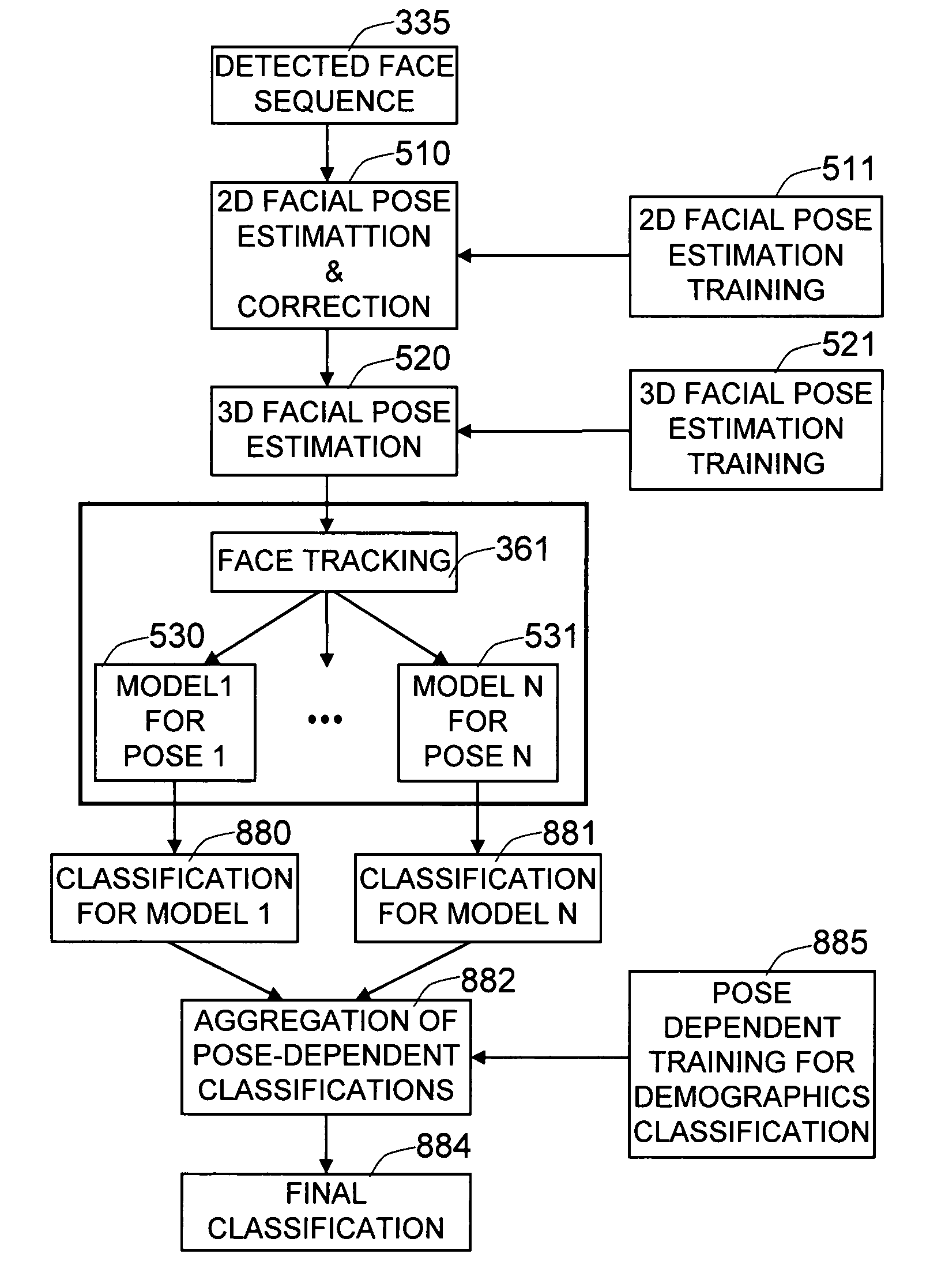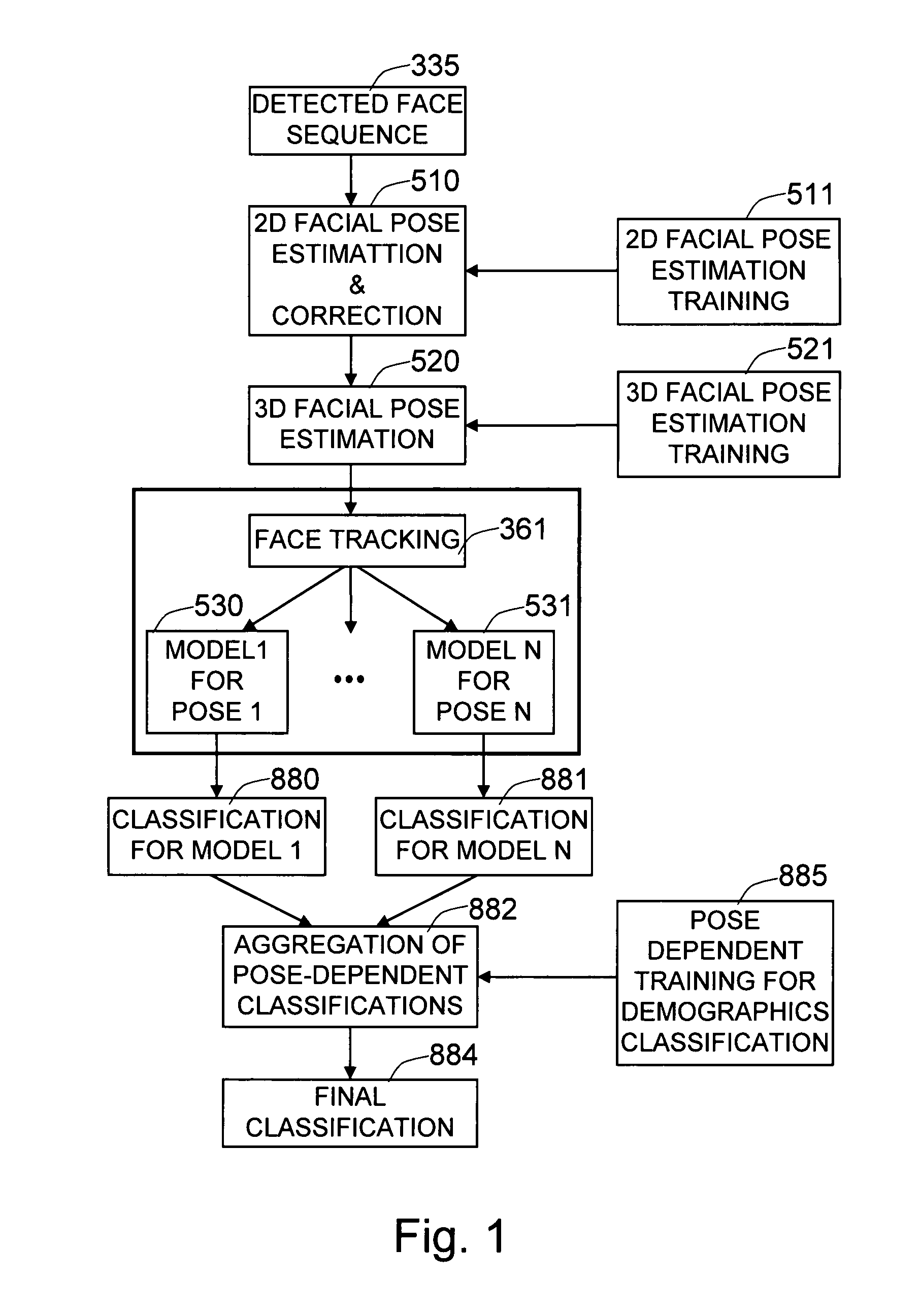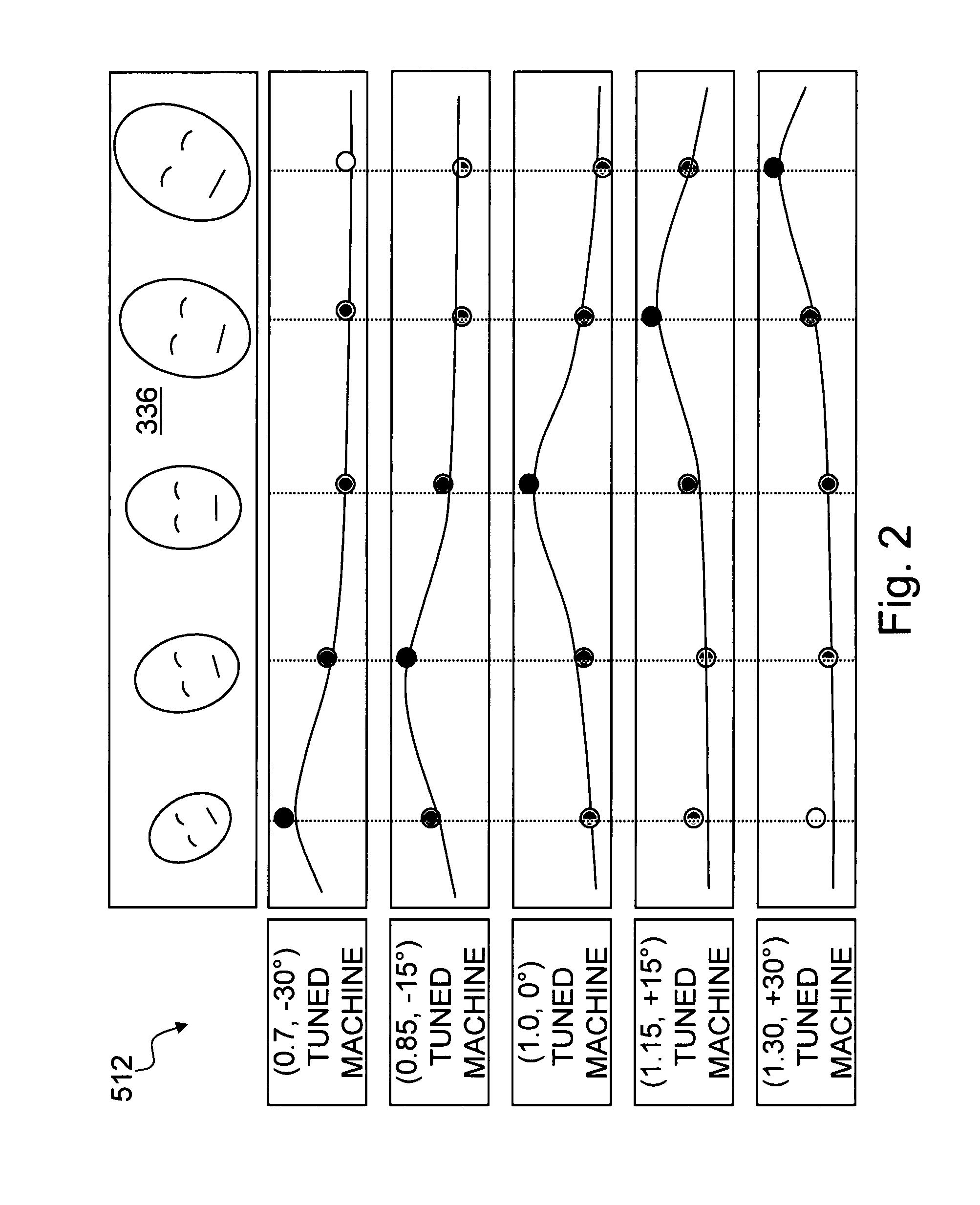Method and system for robust demographic classification using pose independent model from sequence of face images
a demographic classification and pose independent technology, applied in the field of face-based automatic demographic classification system, can solve the problems of large degree of error, method is also susceptible to errors, and the majority of tracking approaches will fail under low frame ra
- Summary
- Abstract
- Description
- Claims
- Application Information
AI Technical Summary
Benefits of technology
Problems solved by technology
Method used
Image
Examples
Embodiment Construction
[0063]FIG. 1 is an overall scheme of the system in a preferred embodiment of the invention.
Overview
[0064]The proposed invention provides a face-based automatic demographics classification system that is robust to pose changes of the target faces and to accidental scene variables (such as noise, lighting, and occlusion). Given a sequence of detected faces 335 in a scene, the two-dimensional facial poses (position error, size, orientation) are estimated and corrected using a novel machine learning based method 510. As most of the face processing technologies suffer from the sensitivity of the system to the pose changes of the face, we estimate the three-dimensional pose 520 of the people, using a conceptually similar novel machine learning based approach. Then the face tracking 361 module keeps identities of the person using geometric and appearance cue of the person, where multiple appearance models, such as “model 1 for pose 1”530 through “model N for pose N”531, are built based on ...
PUM
 Login to View More
Login to View More Abstract
Description
Claims
Application Information
 Login to View More
Login to View More - R&D
- Intellectual Property
- Life Sciences
- Materials
- Tech Scout
- Unparalleled Data Quality
- Higher Quality Content
- 60% Fewer Hallucinations
Browse by: Latest US Patents, China's latest patents, Technical Efficacy Thesaurus, Application Domain, Technology Topic, Popular Technical Reports.
© 2025 PatSnap. All rights reserved.Legal|Privacy policy|Modern Slavery Act Transparency Statement|Sitemap|About US| Contact US: help@patsnap.com



